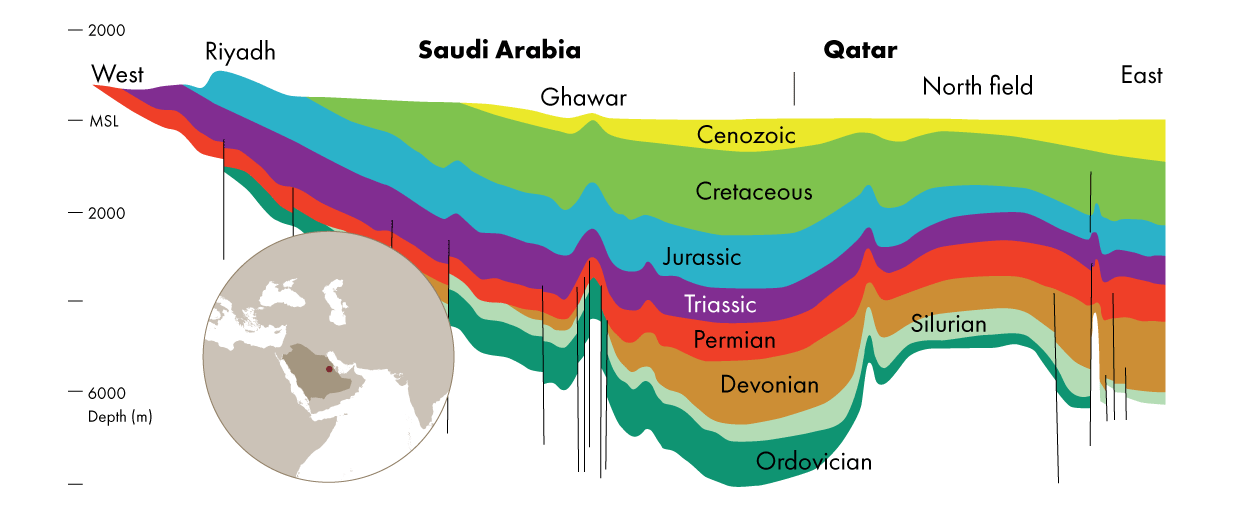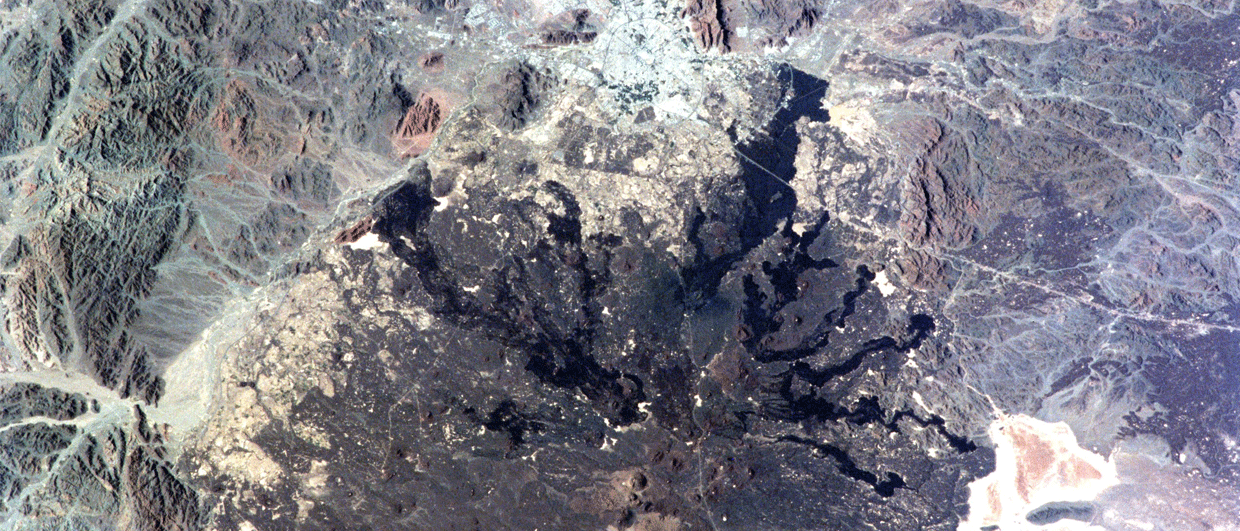In November last year, Aramco announced that it produced its first unconventional tight gas from the Ghawar South project, producing up to 300 mmscf/day of gas and 38 kbpd of condensate. It is the second project of this kind after the commencement of gas production from the North Arabia field in 2018. And it is not the last one either; work is also ongoing at the Jafurah unconventional gas field, which is supposed to be in the largest shale gas play in the Middle East.
But let’s take a closer look at Ghawar and where the unconventional gas may be reservoired in. First of all, the conventional oil in Ghawar is produced from the so-called Middle to Upper Jurassic Arab-D lithofacies, which is a carbonate succession deposited in a shallow marine ramp setting. Thanks to the large structure, which is a large north-south trending Hercynian basement horst, and preservation of excellent reservoir quality, Ghawar has proven such a prolific producer. However, it was soon realized that the field also had gas potential, with both the Permian and the Devonian having tested positive for gas. Conventional gas production from these reservoirs has taken place for a number of years already, in addition to production of associated gas.
A wide range in facies
The Permian succession below the Ghawar field is characterized by two different gas reservoirs. The Khuff, which is of Late Permian age, consists of a series of stacked shallow water carbonates, whilst the slightly older Permo-Carboniferous Unayzah consists of eolian and fluvial sandstones. In both cases, Silurian shales are thought to be the main source rock. The third and last gas reservoir is the Devonian Jauf, which is a series of estuarine and near-shore sandstones, again sourced by Silurian shales.
As a publicly available presentation from Abdulkader M. Afifi from Aramco notes at the end, the main challenge related to the Ghawar Paleozoic gas play is the prediction of areas with good reservoir quality. This clearly suggests that there is ample tight reservoir across the field, which may have been avoided until recently. Now, with Aramco now tapping into that resource, combined with the observation of the size of the closure, it is logical to assume that there is enormous potential for the production of tight gas from the largest oil field in the world.





